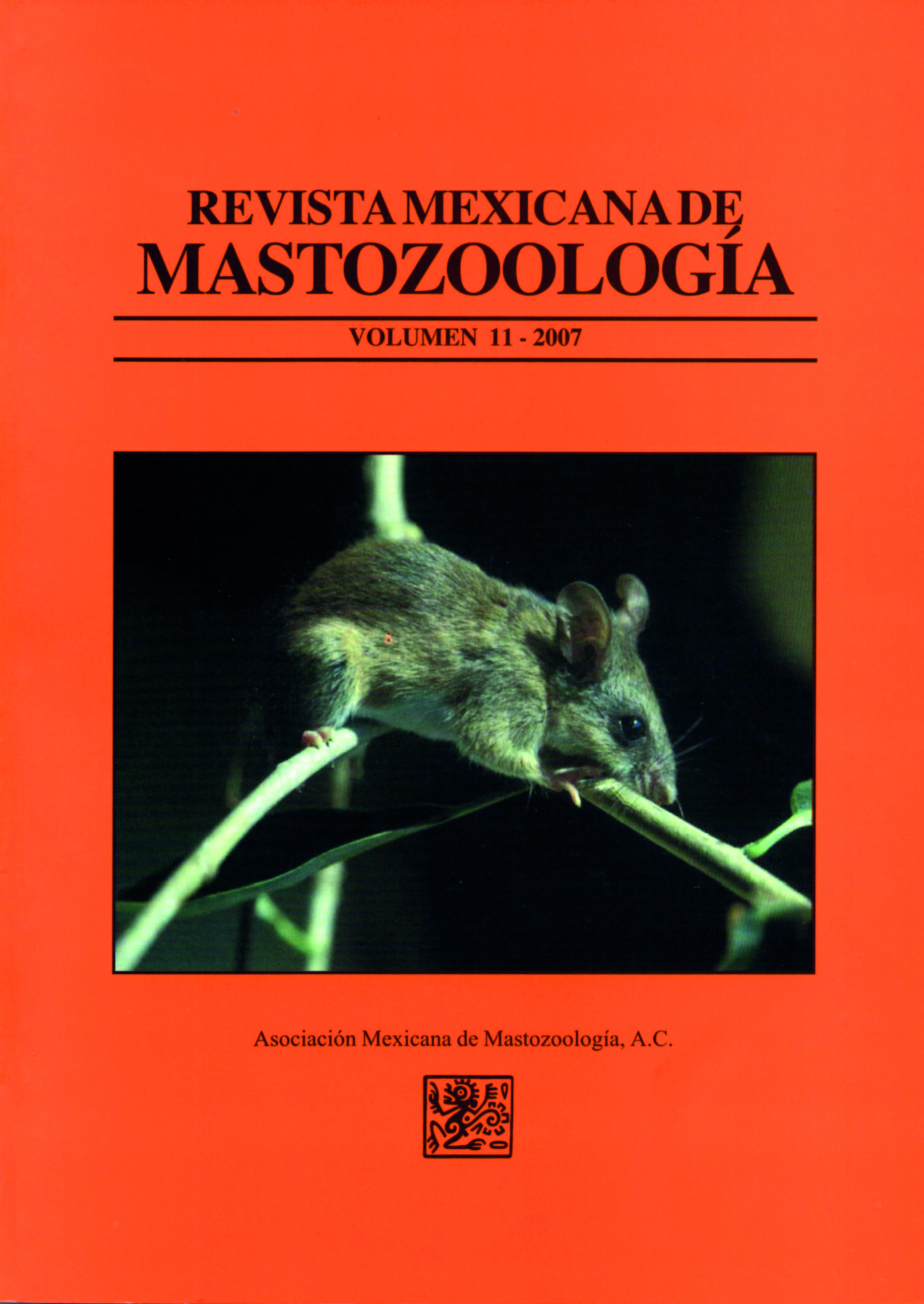Abstract
In november 2006, using a prototype of video camera, we obtained the shooting of a pair of jaguars in mating attitude. This was done in the El Zapotal private reserve, in the northeastern portion of the Yucatan Peninsula, and represents one of the first experiences of its type, also providing unique information about the mating behavior and the date of occurrence. The latter is consistent with some results derived from wide spectrum, long term studies about jaguar populations in South America.
References
Ceballos, G., C. Chávez, R. List, R. Medellín, C. Manterola, A. Rojo, M. Váldez, D. M. Brousset, S. M. B. Alcántara (Comité editorial) 2006. Proyecto para la conservación y Manejo del Jaguar en México. Serie proyectos de Recuperación de Especies Prioritarias. Número 14. SEMARNAT, México D.F. 12:13.
Challenger, A. 1998. Utilización y conservación de los ecosistemas terrestres de México. Pasado, presente y futuro. Conabio, IB-UNAM, Sierra Madre. 381 y 391.
Clevenger, A.P. y J. Wierzchowski. 2001. Gis-based modeling approaches to identify mitigation placement along roads. en http://www.icoet.net/downloads/GIS.pdf
Coss, R.G., Ramakrishnan, U. y Schank, J. 2005. Recognition of partially concealed leopards by wild bonnet macaques (Macaca radiata). The role of the spotted coat. Behav. Process,68:145-163.
Faller-Menéndez, J.C., C. Chávez-Tovar, S. Johnson, y G. Ceballos-González. Jaguares en el Noreste de la Península de Yucatán: sobreviviendo a través de milenios de impacto humano. En preparación.
Hudson M-A y D.M. Bird 2006 An Affordable Computerized Camera Technique for Monitoring Bird Nests. Wildlife Society Bulletin, 34 (5):1455
García Gil, G. 2004. Reconocimiento Geomorfológico y Geohidrológico de la Meso Región El Zapotal, Yucatán, México. Informe final de trabajo presentado a Pronatura Península de Yucatán. P. 10.
González-Iturbe, J. y F. Tun. 2004. Vegetación y Flora del Rancho ‘El Zapotal’, Municipio de Tizimín, Yucatán: Informe Técnico Final para Pronatura Península de Yucatán. P. 1.
Instituto Nacional de Ecología (INE 1999). Programa de manejo Reserva de la Biosfera Ría Lagartos. Semarnap. Pp. 7, 16, 19.
Law, C. (ed.). 2003 . Guidelines for Captive Management of Jaguars. http://www.jaguarssp.org/Animal%20Management.htm. P. 29.
Leopold, A.S. 2000. Fauna Silvestre de México. Reimpresión. Editorial Pax. México. P. 531
Pronatura Península de Yucatán, A.C. (PPY 2004a). Plan de Manejo. Reserva Privada El Zapotal. Borrador interno. Junio de 2004. P. 4.
Pronatura Península de Yucatán, A.C. (PPY 2004b). Sistema de Información Geográfica. El Zapotal, Yucatán, México. Julio de 2004.
Quigley, H.B. y P.G. Crawshaw. 2002. Reproducción, crecimiento y dispersión del jaguar en la región de El Pantanal de Brasil. Pp. 292: 293 y 299, en: Jaguares en el nuevo milenio: Una evaluación de su estado, detección de prioridades y recomendaciones para la conservación de los jaguares en América (Medellín, R.A., C. Chetkiewicz, A. Rabinowitz, K.H. Redford, J.G. Robinson, E. Sanderson, y A. Taber, eds.). Fondo de Cultura Económica, Universidad Nacional Autónoma de México/Wildlife Conservation Society. México D. F.
Reif, V. y R. Tornberg. 2006.Using time-lapse digital video recording for a nesting study of birds of prey. European Journal of Wildlife Research, 52: 251-258
Scognamillo, D., I.E. Maxit, M. Sunquist y L. Farrell. 2002. Ecología del jaguar y el problema de la depredación de ganado en un hato de los llanos venezolanos. Pp. 142 y 146, en: Jaguares en el nuevo milenio: Una evaluación de su estado, detección de prioridades y recomendaciones para la conservación de los jaguares en América. (Medellín, R.A., C. Chetkiewicz, A. Rabinowitz, K.H. Redford, J.G. Robinson, E. Sanderson, y A. Taber, eds.). Fondo de Cultura Económica, Universidad Nacional Autónoma de México/Wildlife Conservation Society. México D.F.

This work is licensed under a Creative Commons Attribution-NonCommercial-NoDerivatives 4.0 International License.
Copyright (c) 2014 UNIVERSIDAD NACIONAL AUTÓNOMA DE MÉXICO



